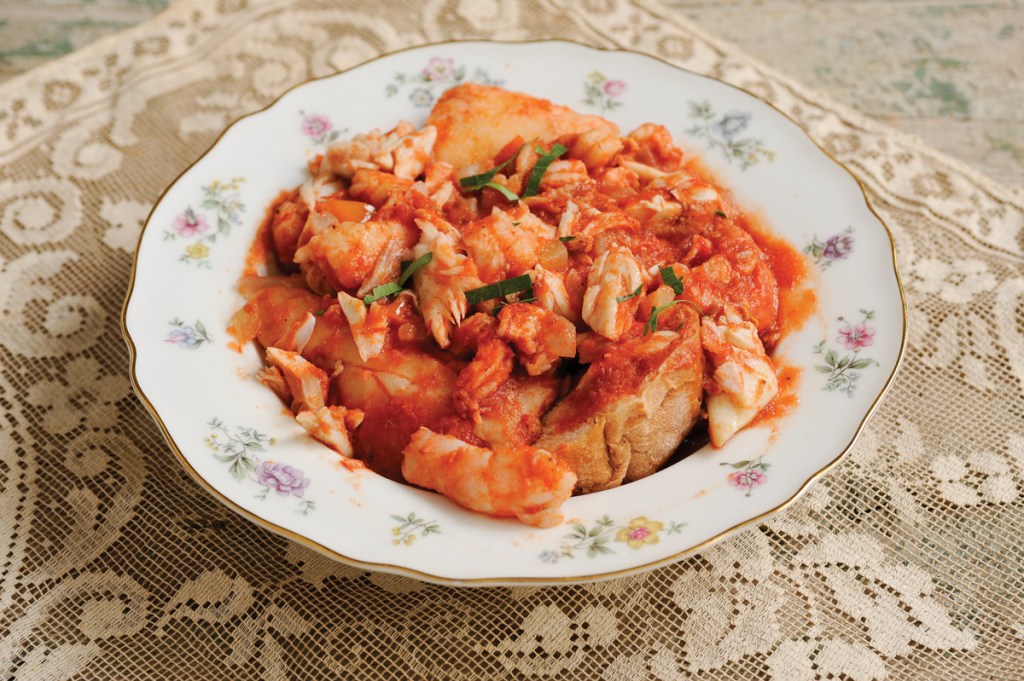Creole versus Cajun
Published 1:15 pm Wednesday, February 24, 2016

- A bouillabaisse is a rich, spicy stew or soup made with various kinds of fish and originates from France. This Cajun Bouillabaisse was created by Brenda Boudreaux for competition.
Blends of culinary history make unique dishes
Trending
For those who live in South Louisiana, the difference between Cajun and Creole foods might be more obvious than for the thousands of tourists who visit the area from around the world. Cajun is often mistaken to be the Creole style more commonly found in New Orleans than Acadiana where Cajun is predominant.
Chef Marcelle Bienvenu from St. Martinville is not only great in the kitchen, she has the historical knowledge and understanding as a teacher and author. The subject of Creole versus Cajun brought an easy response as she closed up classes at Nichols State University’s Chef John Folse Culinary Institute due to the pending storms Tuesday.
“Until Chef Paul Prudhomme arrived on the culinary scene in the mid-1970s, there were few people who even thought there was another cuisine other than Creole in South Louisiana,” Bienvenu said. “With that said, Creole food was more sophisticated, ‘city’ food if you will, and Cajun food was ‘country’ food — usually cooked in one pot — like jambalaya or gumbo.”
Bienvenu said the Creole lady who entertained in New Orleans set a beautiful table with linens, china, crystal and silver. There was a meal served in courses accompanied by appropriate wines. After dinner coffee and liqueurs were served probably in the sitting room or the courtyard.
Cajun ladies on the other hand, she said, looked out her back door and whatever swam, flew or crawled in the backyard may well end up in the pot. Because one never knew how many people were going to share a meal, the cook relied on a “long gravy” or the addition of another duck in the oven to amply serve guests, she said.
“Of course, in the last 30 years, both cuisines have integrated with each other so it’s not as easy to describe or define the cuisine that has evolved,” Bienvenu said.
Trending
Season to Taste
France’s culinary history became the backbone of what later evolved into Cajun/Creole cuisine. Considered by Bienvenu as foundational skills for cooking in South Louisiana are making a roux, bouillabaisse, fricassees, which is a dish of stewed or fried meat served in a thick white sauce, vegetable dishes called ratatouille, pralines and beignets.
“When the French acquired Louisiana in 1765, they brought aristocracy with an appreciation for culture, tradition and respect for religion,” Bienvenu said.
She also attributes the evolving tastes of Louisiana to the German, Spanish, Italian and English influences that were combined by the African cooks to create the unique tastes of the South.
“Europeans of wealth and stature settled in New Orleans and brought with them a palate for more gentrified cuisine reminiscent of their French, Spanish or English roots,” Bienvenu said. “Over time, servants and cooks of African descent learned these sophisticated recipes and techniques and blended them with their spicy, herb-infused cooking. Before long, tastes mingled into a soulful mix that became the defining taste of Creole.”
The Acadian people, commonly known in modern times as Cajuns, were not people of wealth but simple farming families who were deported from what is now Nova Scotia. To survive, they trapped, fished and hunted for food, and applied their basic rural French culinary skills to simple recipes that fit their palate, she said.
Today with the addition of the Asian and Vietnamese cultures, the plentiful seafood, vegetables, meat and poultry dishes keep the evolution of taste continually changing.





